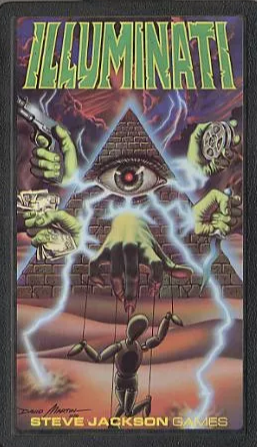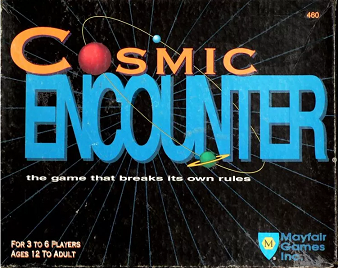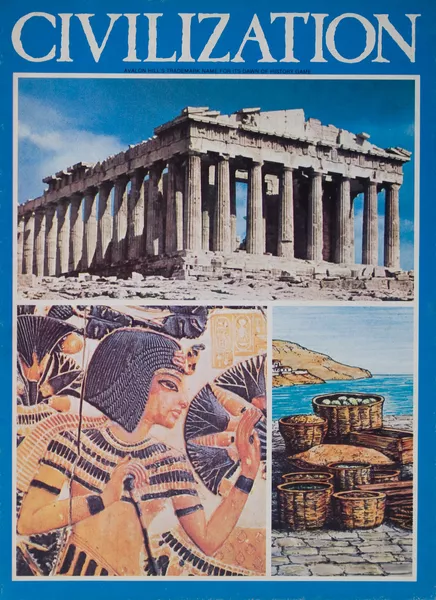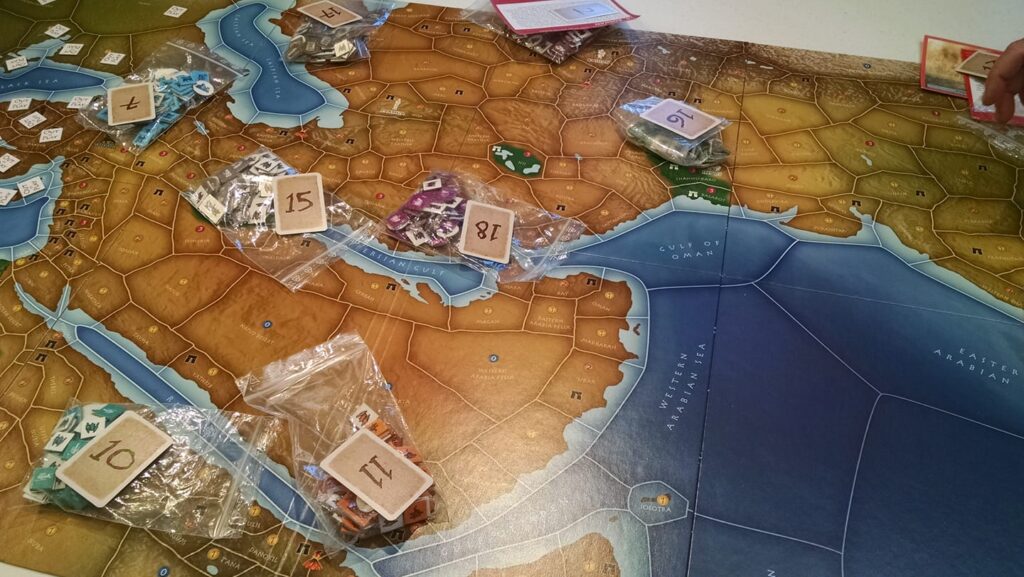Two More Board Games from the Top 10 List
Here are two more games for my GeekList about the top 10 games on my BGG user profile. They are both “old school” games that younger generations might not recognize, but that gamers my age would possibly remember from their youth.
Why am I making this list? Simply put, because I want to dig up my gamer past and put it on the Internet. I have all these artifacts that are like a record of my gaming life: beat-up old copies of games with customized rules and components, and piles of notes and ideas.
Obviously I’m not going to scan and digitize all of that, but I can at least put together some online content that captures that information – frankly, for posterity. Then, when I’m gone, you can still go to my profiles and get an idea of what it was like to be a game enthusiast in the late 1900s and early 2000s, should that interest you.
So, without further ado, two more games from my top 10:
#8 Illuminati
In my teen years, I was one of a certain breed of nerd who obsessively read The Illuminatus! Trilogy, the conspiracy theory novels by Robert Anton Wilson and Robert Shea. You could spot us carrying our dog-eared copies of the big red omnibus edition in the hallways of my high school. We all fancied ourselves fringe intellectuals with a keen understanding of the world denied to our mundane peers. We were resonating with the countercultural vibe of that time period.
How far down the conspiracy rabbit hole I really fell I could not say. Probably I enjoyed the genre with tongue firmly in cheek. But one part of Illuminatus! fandom was playing a card game called Illuminati, published by Steve Jackson Games. I know I played it in high school, because I have a fond memory of playing at one of the old GenCons, where I actually won a copy of the game in a tournament. I wrote about it in this sesson report, where you can see a picture of the copy I won, which I still own: The Gnomes of Zurich Take Over the World Sometime in the Early 1980s.
This was also a popular game at the WarGamers Club in college. The game came with blank cards so you could make up your own, and I still have those in my old copy. Here’s a couple of examples (I have others but they are not in great shape):
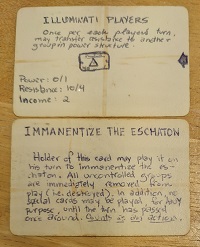
In the late 80s one of my friends ran a really cool play by mail (PBM) version of the game. He printed out a set of rules (which I still have) on perforated computer paper, written up as a roleplaying game he called “The Secret Wars.” The way it worked was your PC was the head of a conspiracy (which you could make up and could be anything you wanted) and acted as an agent. You could recruit more agents as NPCs, and build up a conspiracy power structure using rules like in the Illuminati card game.
Each turn, each agent and each group would get an action. All of this was submitted by mail, and after a bit you’d get back the results. What was so great about it was, since it was all done by mail, you actually had no idea how many players were in the game and what the big picture was. You had to slowly figure it out based on your correspondence with the gamemaster.
I don’t think the game ever officially ended, just sort of faded out. I ran my own game in the early 90s with new friends I had made in college, and still have all those notes and papers. It too faded out after a while. It’s hard keeping up with a play by mail game. With permission from my friend who gave me the rules back in the 80s, I’m planning to transcribe them into a digital document and upload them to BoardGameGeek and to my personal web site (it’s a medium term project of mine).
I’m not sure I would want to run another PBM Illuminati game in today’s political climate, with conspiracy thinking actually being an existential threat instead of a mere countercultural affectation. But it sure was fun when I did it before.
In the late 90s/early 00s collectible card games were the rage (I guess they still are), and an Illuminati-themed version was made called Illuminati: New World Order. I briefly got into it, but I never had enough cards to make a really competitive deck. I remember liking it though.
Although it’s been 20 years since I’ve played any version of Illuminati, this game will always have a special place in my heart for all the zany, subversive fun it has provided.
#6 Cosmic Encounter
This is a game that was hugely popular in my college years. It is very chaotic and luck based, unlike the kinds of games that are popular today. It also has a storied history, with many different editions published as the rights passed from game company to game company.
Back in those days, we would have considered this game, and games like Illuminati and Nuclear War, to be “medium weight,” or games to play when you only had a couple of hours, not a whole day. They were all random and chaotic, too, but that was how we liked our games back then.
I first played the original Eon edition with a group of college friends. The game has a goofy space conquest theme, and each player has one or two Alien powers. Each power comes with a matching card called a Flare. In this edition, you didn’t discard the Flares when you played them, which made them more powerful (and also made sense given the name). Later editions made it so that the Flares were one time use.
I know I’ve played the West End version, but the one that I’ve played the most is the Mayfair edition. I own a copy, with all the expansions stuffed into the main box, well worn from many, many plays. Even after I graduated from college, I was able to find players throughout the 1990s.
We had a game group at one my old jobs where we played at lunch time every Wednesday. This was actually at the dawn of the Eurogame era, and we played games like Settlers of Catan as well, but since we were older generation, we were comfortable with a game in the older style. When we played Cosmic, in order to expedite game play we would pick our Alien powers ahead of time. One of the guys in our group created a Unix program that generated random powers. Once we each picked our powers, then he would set the game up, including the Flares, so it would all be ready to go when our lunch break began.
In the 2000s, I haven’t had as much luck getting this game to the table. I played the Fantasy Flight version once but wasn’t thrilled, probably because I only played the base game. The few times that I’ve brought Cosmic to the table in recent years, it hasn’t caught on. I think it is too chaotic for today’s gamers, who are used to games which accomodate sure-footed strategizing. In Cosmic Encounter, the luck of the draw can overwhelmingly favor one player over the others. Some combos are insanely powerful, and others weak and ineffective. But I’ve always loved how frenzied and chaotic this game is, and would gladly play it, with all expansions, any time anyone asked.
